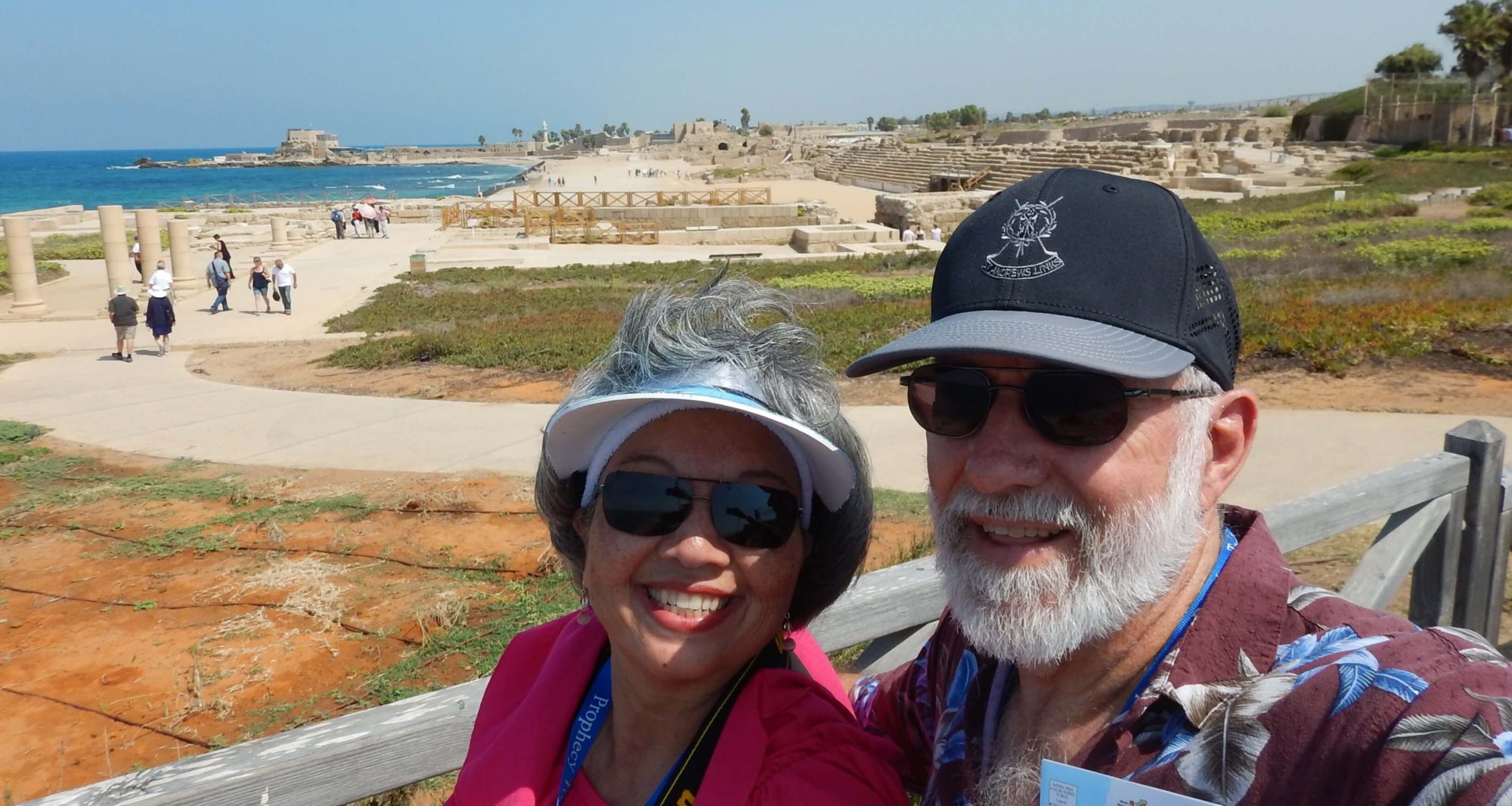“Unto the church of God which is at Corinth, to them that are sanctified in Christ Jesus, called to be saints, with all that in every place call upon the name of Jesus Christ our Lord, both their’s and our’s.” 1 Corinthians 1:2
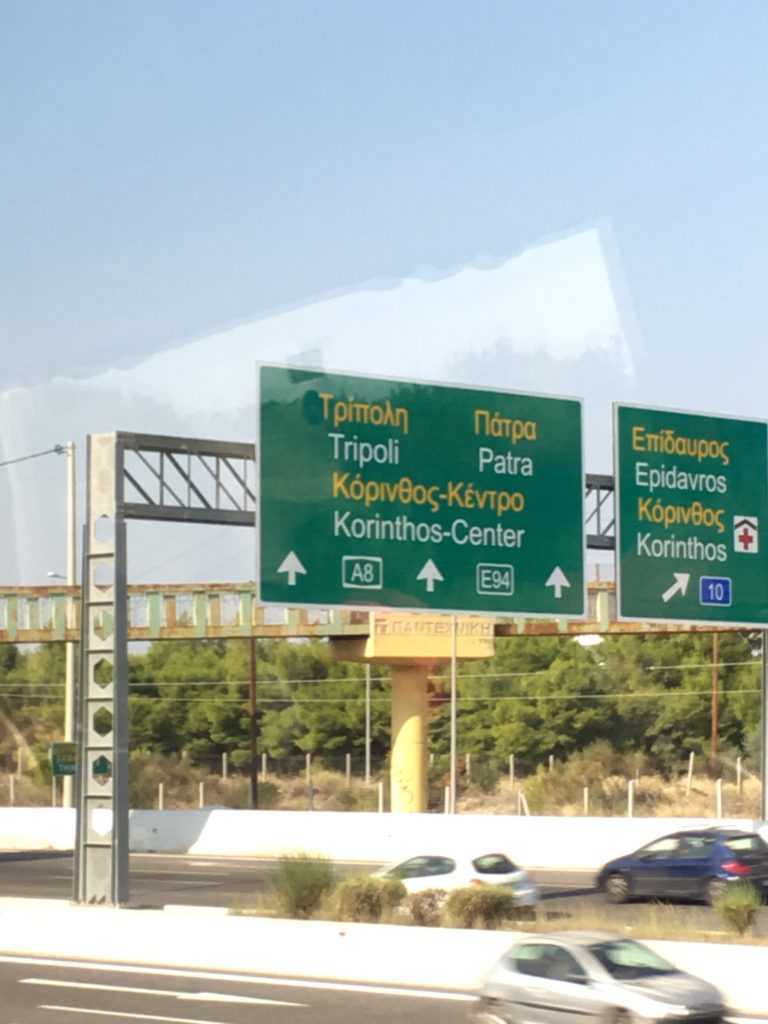
I was thinking of the apostle Paul during our trip to Corinth. It took about an hour or so for us to get to Corinth from Athens by bus, and I thought about how long it took Paul to travel there. To think that he probably walked nearly everywhere boggles the mind because the distances are so great. Even by boat, the trip would have been long. What great lengths he went to to get the gospel to people. I think of the Corinthians who struggled in their new faith, and how Paul must have loved them so much to invest not only his time into their lives, but his heart as well.
Paul came to Corinth on his way to Rome, and during his stay, he worked as a tent maker while he taught the Corinthians about Jesus. The Greeks already had a concept of god-mortal offspring as many mythological Greek god-human unions produced demi-god heroes such as Hercules and Achilles. They understood the concept of the resurrection also from examples such as the goddess Persephone who went to the underworld and then returned to the surface. However, they had no concept of a loving heavenly Father who sacrificed Jesus, His only Son, so that they could have their sins forgiven and receive eternal life! Paul hoped to change all that for them and give them true hope, something they could not ever acquire through their mythological gods and goddesses!
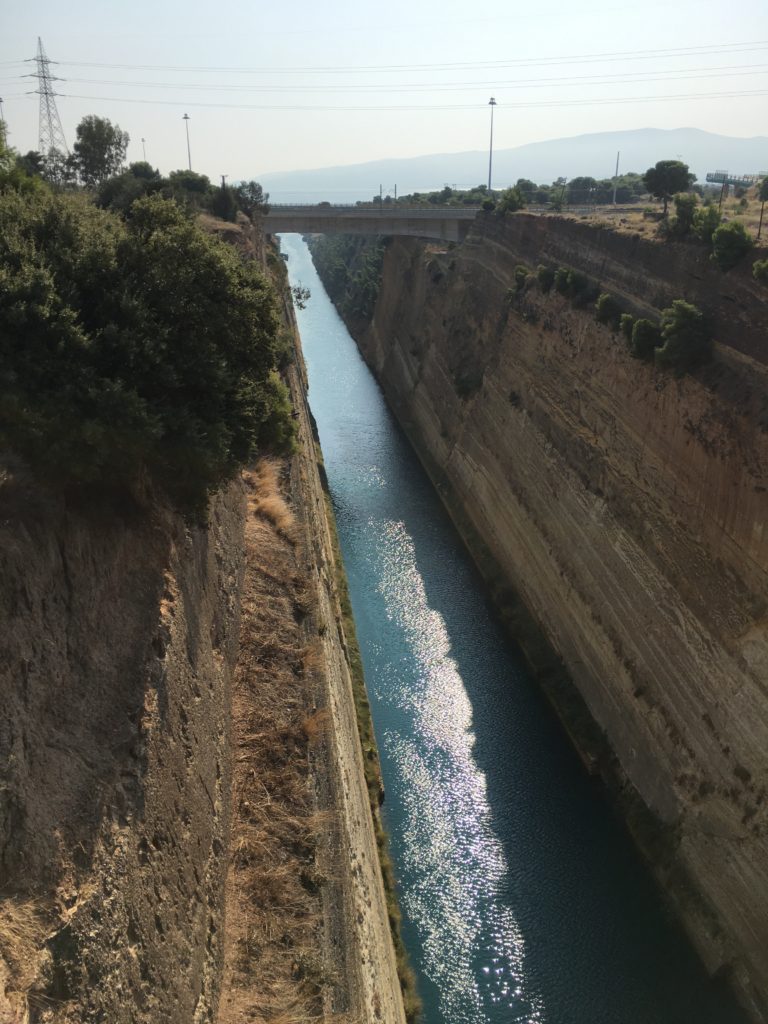
(Corinth Canal)
There were not any excursions into Corinth itself. The only tour that would take us near the city was a trip through the Corinth Canal. Just before heading to the boat for the trip, we stopped at a bridge spanning the canal. From here we could see the walls of the 19th century man-made canal and the passageway from the Ionian Sea to the Aegean Sea. Prior to the canal being built, ships had to sail around the Peloponnesian peninsula. At times, the canal closes due to the water level being too low from the winds, which are strong enough to alter the water currents. The ocean tides themselves only vary the depth of the canal by 60 cm at the most, so they don’t really impact the transit. The canal is about 4 miles in length, about 70 (bottom of water) to 80 feet wide (at the water’s surface), and a depth around 26 feet on average. It was dug at sea level, and it has no locks.
Here are some of our photos from the Corinth Canal.
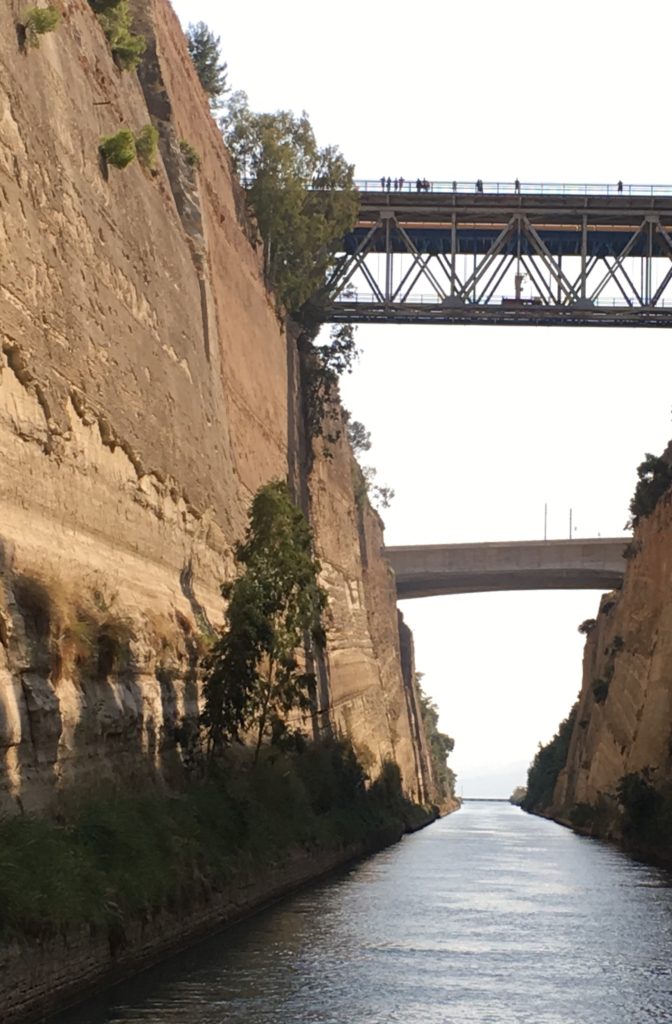
(We stood on the same bridge you can see the people on in this photo.)
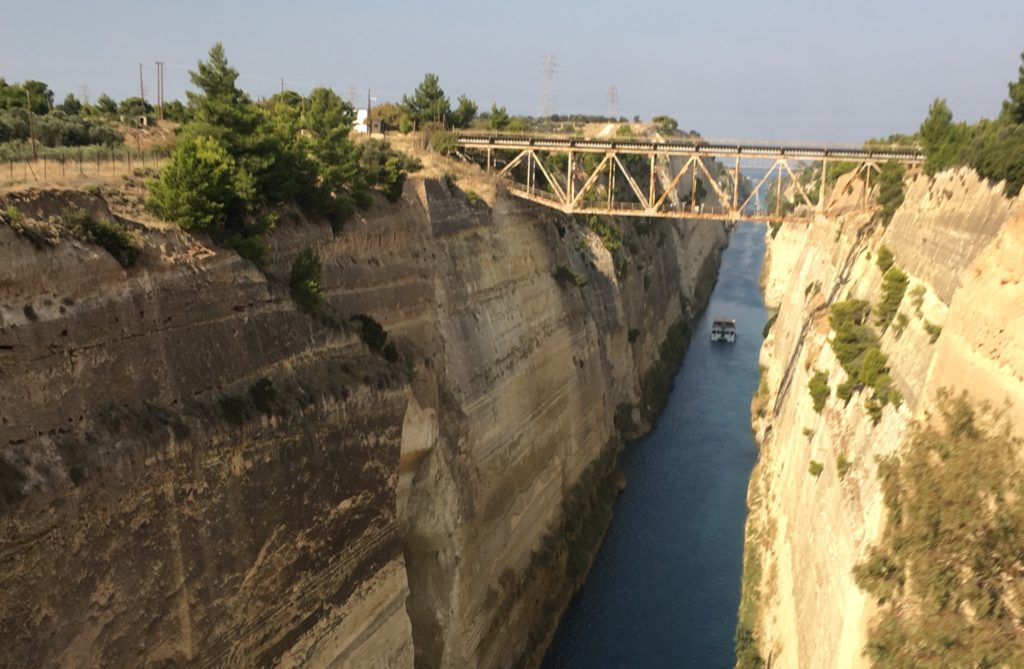
(This is the same kind of boat we rode as we made the transit.)
Layers of sedimentary rock, mainly sandstone and limestone, comprise the walls of the canal. The canal is in a seismically active area, and sometimes there are landslides in the canal, which can require closure for extended lengths of time.
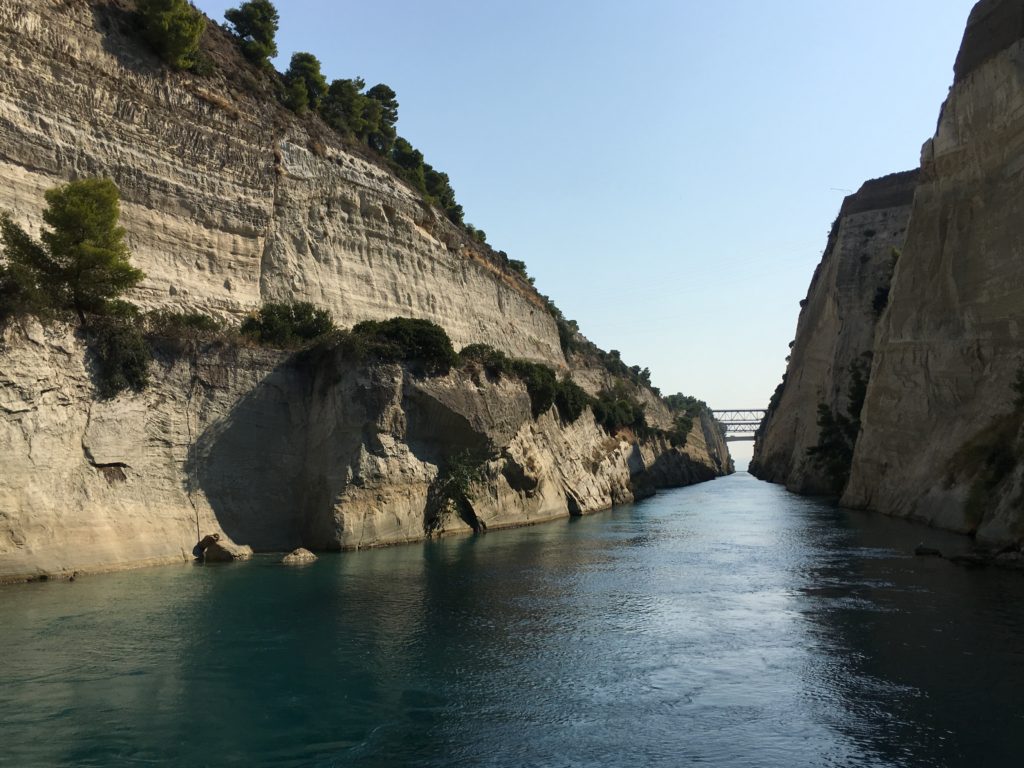
(Our view as we sailed through the canal.)
Next stop: Katakolon, Greece
